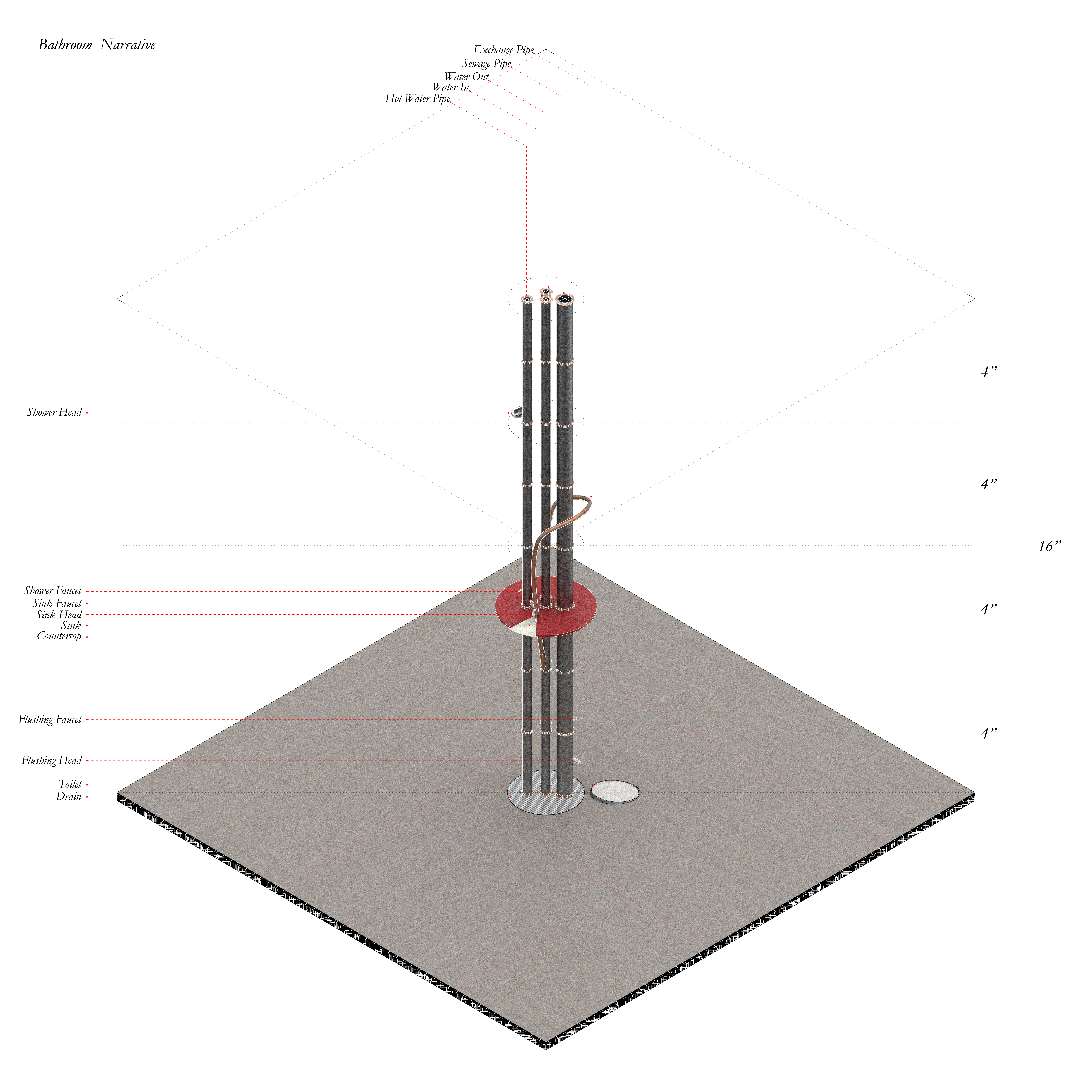Bathroom
The Kitchen and Bathroom are ubiquitous, serving domesticity as functional modern spaces. Functionalism, as a style, is the conditioning of space to the needs of a specific use. Specifying purpose or use for space engages in bias per the one who is specifying. Anti-functionalism then is rhetorically the antithesis to this conditioning of space.
Western Bathrooms are composed of a number of superfluous features and details that can be reduced or removed altogether, while still maintaing the bathroom’s function. The plumbing is the irreducible DNA which serves every need of the Bathroom. Often, Plumbing is an apotheosis of the architects design, simply enabling inhabitants to exist within the space creaeted. Oppositionally to this, the analysis posits that the most important aspect of the modern home is its plumbing.
Negotiating the infrastructure of the building engages a new brand of design, where sharing space with previously condemned componetnts to the shadows of the framed wall become a luxury element for observation and marvel rather than a comprmise proposed by another trade.
Narrative: A series of pipes emerge from the floor, immediately surrounded by a conventional drain. Near the drain, at the foot of the pipes, is a curvilinear porthole that is covered but meant o open when needed. The floor is pitched towards the drain and is composed of cheap tile. Up the pipes are several faucetsaccompanied by levers suggesting that the pipes hold water. Three feet hgiher there is a small circular surface similar to a counter. A curvilinear pipe weaves around the vertical members joining one to another showing a hierarchy. one pipe’s diameter is larger than the others and is positioned closest to the porthole mentioned prior. This simple system is free standing in the space, drawing similarity to a column, but only in its form and not in its funtion.
The Kitchen and Bathroom are ubiquitous, serving domesticity as functional modern spaces. Functionalism, as a style, is the conditioning of space to the needs of a specific use. Specifying purpose or use for space engages in bias per the one who is specifying. Anti-functionalism then is rhetorically the antithesis to this conditioning of space.
Western Bathrooms are composed of a number of superfluous features and details that can be reduced or removed altogether, while still maintaing the bathroom’s function. The plumbing is the irreducible DNA which serves every need of the Bathroom. Often, Plumbing is an apotheosis of the architects design, simply enabling inhabitants to exist within the space creaeted. Oppositionally to this, the analysis posits that the most important aspect of the modern home is its plumbing.
Negotiating the infrastructure of the building engages a new brand of design, where sharing space with previously condemned componetnts to the shadows of the framed wall become a luxury element for observation and marvel rather than a comprmise proposed by another trade.
Narrative: A series of pipes emerge from the floor, immediately surrounded by a conventional drain. Near the drain, at the foot of the pipes, is a curvilinear porthole that is covered but meant o open when needed. The floor is pitched towards the drain and is composed of cheap tile. Up the pipes are several faucetsaccompanied by levers suggesting that the pipes hold water. Three feet hgiher there is a small circular surface similar to a counter. A curvilinear pipe weaves around the vertical members joining one to another showing a hierarchy. one pipe’s diameter is larger than the others and is positioned closest to the porthole mentioned prior. This simple system is free standing in the space, drawing similarity to a column, but only in its form and not in its funtion.
Refresh page if images do not load





